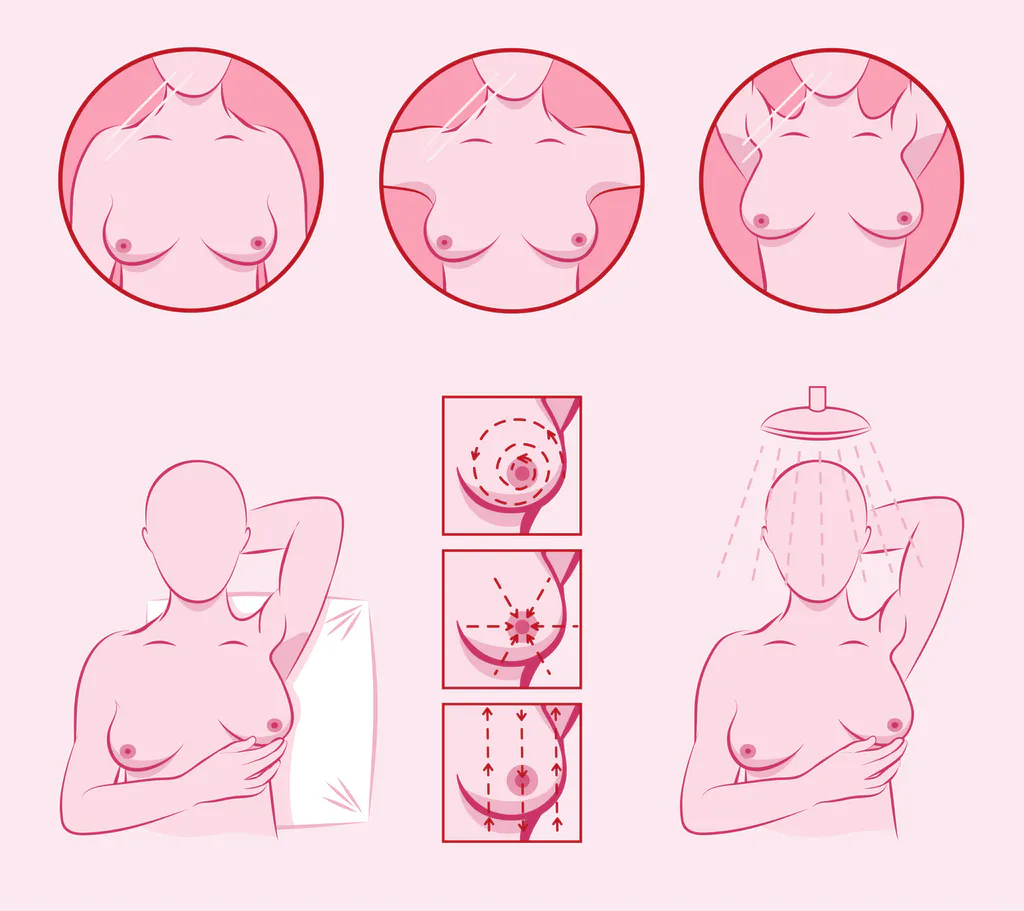Self-Screening Exams - Breast Cancer
Recommendations:
Female - Perform this self-assessment every month
Male - As needed
What is Breast Cancer
Breast Cancer is an unfortunately common condition in women. Large or small, breast cancer can reach all women across the board, and in some cases, it can even be found in men too. Breast cancer comes in many different forms with even more different subtypes. They are often noticed by patients as a nodule that has formed however breast cancer can also come in different versions which are not able to be felt externally but can be picked up by imaging. Breast cancer can move quickly, be extremely aggressive and fatal. The trick with breast cancer is to find it early and remove it before it has a chance to spread. As with most things in medicine, by the time a patient notices symptoms such as pain, it is often too late. Regular, preventative self screenings in addition to annual exams are the best way to identify breast cancer in early stages before it becomes invasive.
What Causes Breast Cancer?
There is no single cause of breast cancer. There are however things that will raise your risk of developing it. Things like obesity, alcohol consumption, reproductive history, and a variety of other things can all cause your risk to raise. Perhaps one of the largest risks has to do with family history. There are genetic inheritable mutations that can make breast cancer not only possible but likely.
Screening Recommendations
In general, the risk of breast cancer gets higher as we age with a vast majority of breast cancer patients being in their 40s and 50s. However, breast cancer can occur at practically any age and the youngest breast cancer patient I have personally seen in practice was 19. It is for this reason that we recommend starting self-exams and professional well-woman exams early at around the time of puberty. Between the ages of 13-15. A professional well-woman exam can be done annually, whereas self-assessments are done monthly. As long as a patient is not at excessive risk
Mammograms are a controversial topic with a lot of different recommendations floating around. At Starlight Health we prefer to keep things simple and just say that traditionally mammograms can begin around age 40 and are done annually until age 74. If there are increased risk factors it can begin earlier but that is a decision between a patient and their healthcare provider.
Timing of Self Assessments
While we recommend monthly assessments, there are in fact two ways to do this. The first way is to pick a date of the month and stick with is such as the 1st of the month, or the first Saturday of a month, etc. This makes it easy to schedule reminders and to remember when to do self-assessments. The downside to doing this is that throughout the month patients experience hormonal changes which can cause different areas of the breast such as benign cysts or fibrous areas to enlarge and have palpable areas. These are more frequently picked up on this method
Method two is to use the timing of the cycle, for example, the first or last day of the period to do an assessment. This will allow a patient to have consistent hormone levels from month to month however is more difficult and less convenient to schedule for many patients.
There is no right or wrong way to do this, it is simply patient preference. Whichever method will allow you to be consistent and not forget is ultimately the best choice for you.
The Self-Breast Exam
To examine your breasts visually, look at their shape, size, and skin texture in a mirror while either sitting or standing. To get different views of your breasts, let your arms hang to their sides, then place them on your hips, then lift your arms above your head, then finally lower your arms and lean your chest forward
To feel for lumps in your breasts, use the pads of your first 3 fingers and press on the breast on the opposite breast. You will need to ensure you feel the entire breast, under the nipple, and up into the armpits. You may do this while, lying down, standing in the shower, or both. To ensure you do not miss a spot there are 3 patterns that you can use for your hand movements. A circular pattern starts from the outside of the breast going all the way to the nipple. Wedge pattern or up and down pattern. You can stick with one, do all 3, or alternate each time you do an assessment. None is better than the other, it’s simply patient preference and which one helps you to get all areas of the breasts without missing a spot
What to look for
There are multiple possible findings in the breast. Visually you can see color changes, nipple discharge, texture changes, puckering, or changes in size of the breast. You may also feel lumps, have painful areas or other things on palpation.
The point of doing an assessment every month is to recognize what your normal is for your body. Should a change occur it would prompt you to get evaluated by a healthcare provider as soon as possible
What to do if you found something unusual
Don’t panic! There are many normal and benign reasons for lumps, masses, and other irregularities in the breast. Simply make an appointment with your healthcare provider to see what is going on and if it is normal. If you would like to schedule an appointment you may do so below


